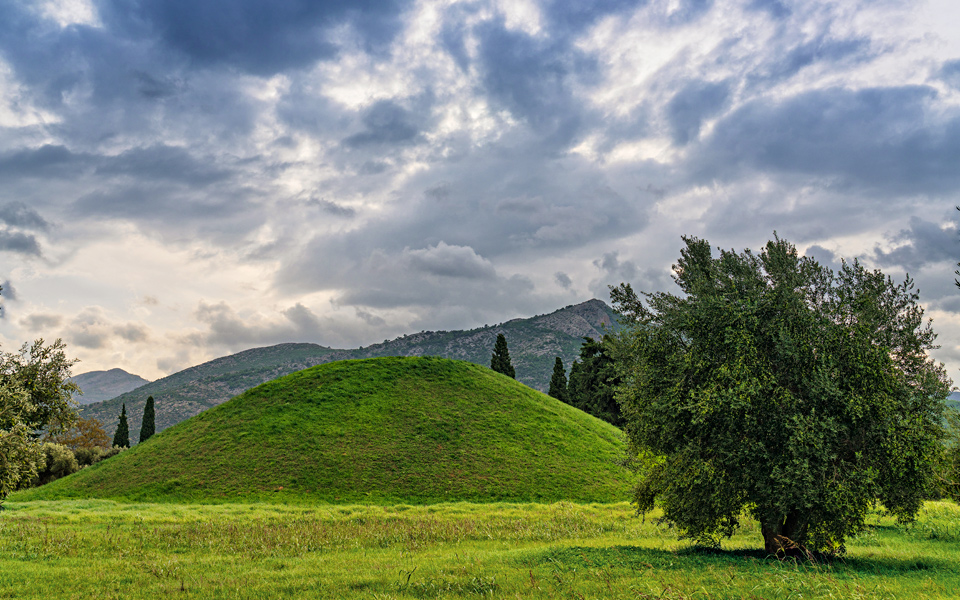The Marathon area is one of the most popular places outside Athens; but don’t let this deter you. Besides its major monuments, there are other corners of the Plain that are seldom seen and fun to explore. This trip, as all excursions described here, is best undertaken with a rental or private car or a hired driver/taxi. At the top of the Marathon list is the Mound of the Athenians, a 10m–high tumulus erected in 490 BC after the Battle of Marathon between the Persians and the Greeks — an event recounted by ancient authors, including the historian Herodotus (5th c. BC) and the Roman-era traveler Pausanias (2nd c. AD). This hill, and the adjacent bronze statue of the Greek commander Miltiades, marks the spot of a large funeral pyre, where 192 Athenian warriors that died defending Greece were ceremonially cremated. Families of the fallen made dedications at the Mound that included ornate black-figure pottery, now displayed in the Marathon Archaeological Museum. On the access road to this district museum (left turn, beyond the Mound), one passes on the right a modern enclosure protecting an extensively excavated Early Bronze Age cemetery (Tsepi), visible through large windows; further on stands another, smaller post-battle tumulus, the Mound of the Plataians.
“Marathon was also known for its native son Herodes Atticus, the sophist, senator and great public benefactor, who founded a music hall on the South Slope of the Acropolis.”
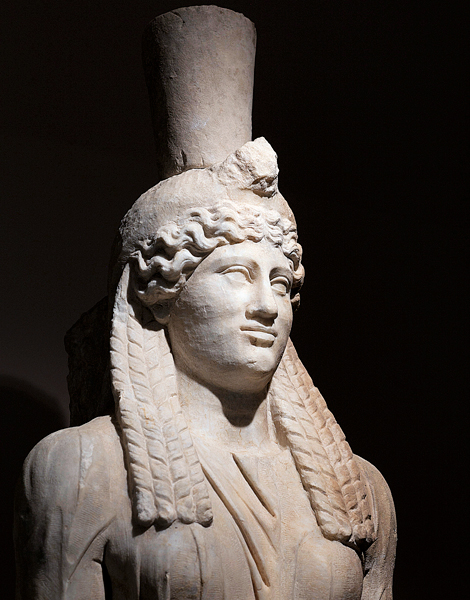
© Hellenic Ministry of Culture and Sports/Archaeological Receipts Fund, Angelos Giotopoulos
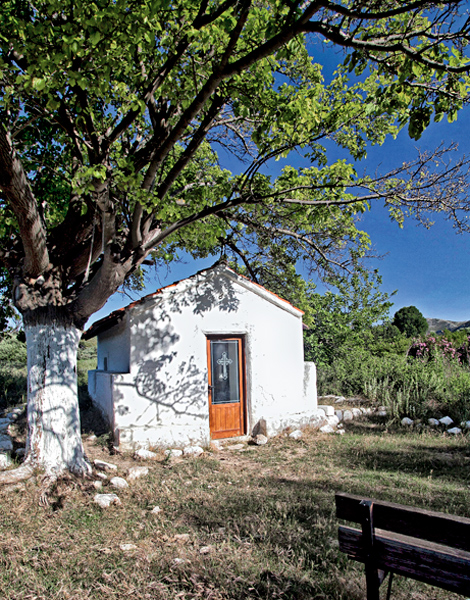
© Hellenic Ministry of Culture and Sports/Archaeological Receipts Fund, Angelos Giotopoulos
As the prehistoric necropolis indicates, Marathon Plain had long been attractive to settlers. When the Persian fleet invaded Greece in the early 5th c. BC, Marathon appeared to be an ideal shore that offered a level, sandy disembarkation point, close to Athens, where Darius’ forces (as many as 600 ships and up to 25,000 men) could conveniently muster. The distinctive Kynosoura (“dog-tail”) peninsula at the plain’s northeastern end provided shelter in its lee from northern winds, while fresh water could be had from the nearby Makaria spring. What Persian strategists didn’t count on were the extensive marshes that lay inland from the northern shore (Schinias, one of Attica’s most pristine beaches). These wetlands could easily be avoided by the Persians prior to the onslaught against the Greeks, who assembled further south (9,000 Athenians, 1,000 Plataians). When the actual battle began, however, and the charging Greek hoplites ferociously routed the Persians, the enemy troops took to their feet in blind panic and ran back toward their ships, only to get swallowed up in brackish waters, bogged down and slaughtered among the reeds. Others managed to reach the beach, but there met further Greek resistance before finally escaping out to sea.
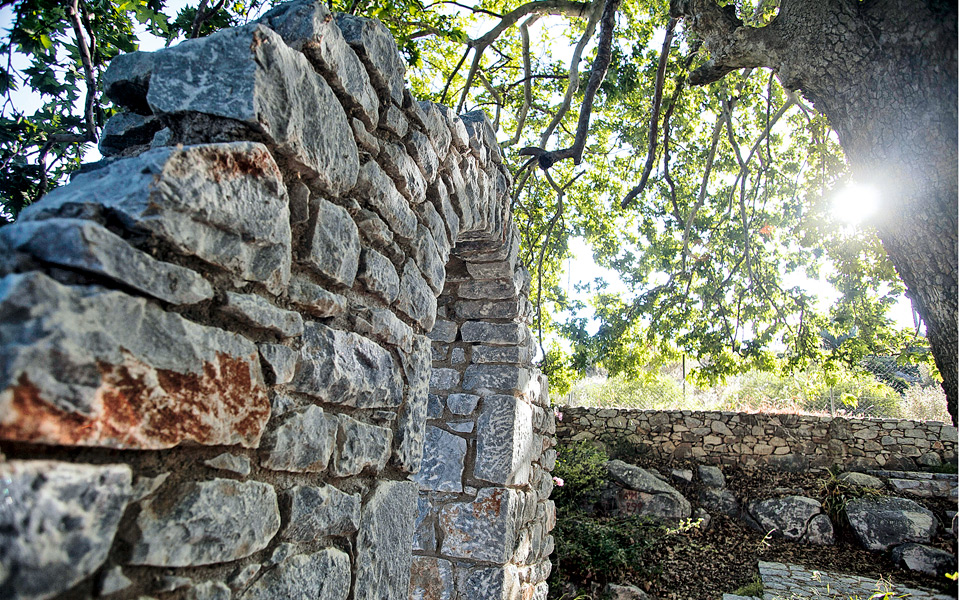
© Hellenic Ministry of Culture and Sports/Archaeological Receipts Fund, Angelos Giotopoulos
Persian casualties at Marathon far outnumbered those of the Greeks. The Athenians lost only those 192 buried in the Mound, with another 11 fighters interred beneath the Mound of the Plataians. Among the Athenian dead was Cynegeiros, brother of the playwright Aeschylus — who himself fought at Marathon, as well as at Salamis and possibly Plataiai in 480-479 BC. Cynegeiros died, Herodotus reports, after losing a hand to an enemy sword while trying to prevent a Persian ship from fleeing.
The fallen invaders numbered some 6,400 (not counting those lost in the marshes). Their burial spot is not visible today, but its general location is marked by the small chapel of Panaghia Mesosporitissa. In 1884, a huge tumbled mass of human bones was recorded lying near this chapel. It is also the area where the Athenians erected an Ionic-style column of Pentelic marble as a victory trophy (475-450 BC). Now replaced with a handsome replica, the original column (Marathon Museum) stood 10m high, capped with a statue of Nike (Victory). It represented a cherished Athenian monument, later mentioned in Aristophanes’ plays The Knights, The Wasps and Lysistrata.
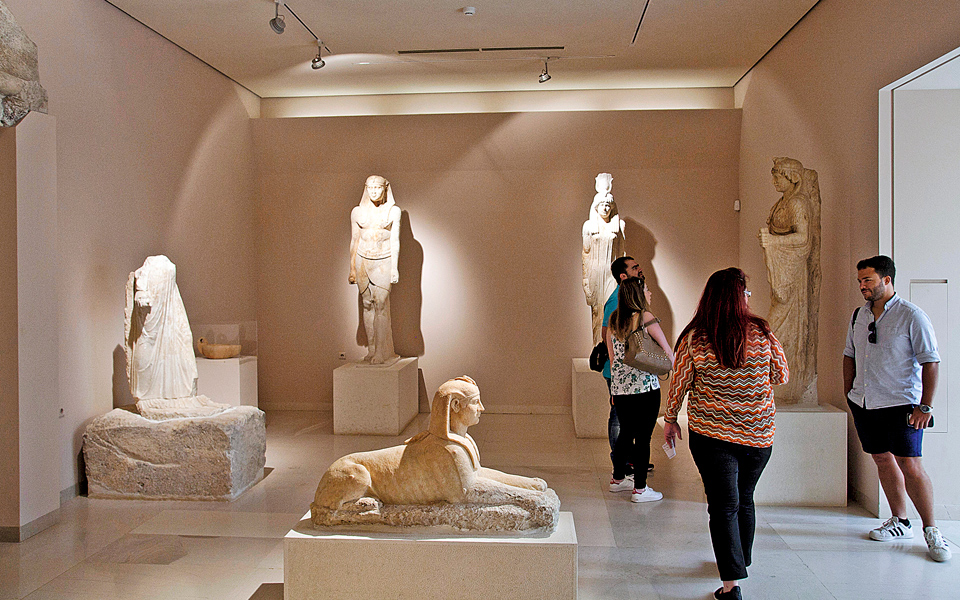
© Hellenic Ministry of Culture and Sports/Archaeological Receipts Fund, Angelos Giotopoulos
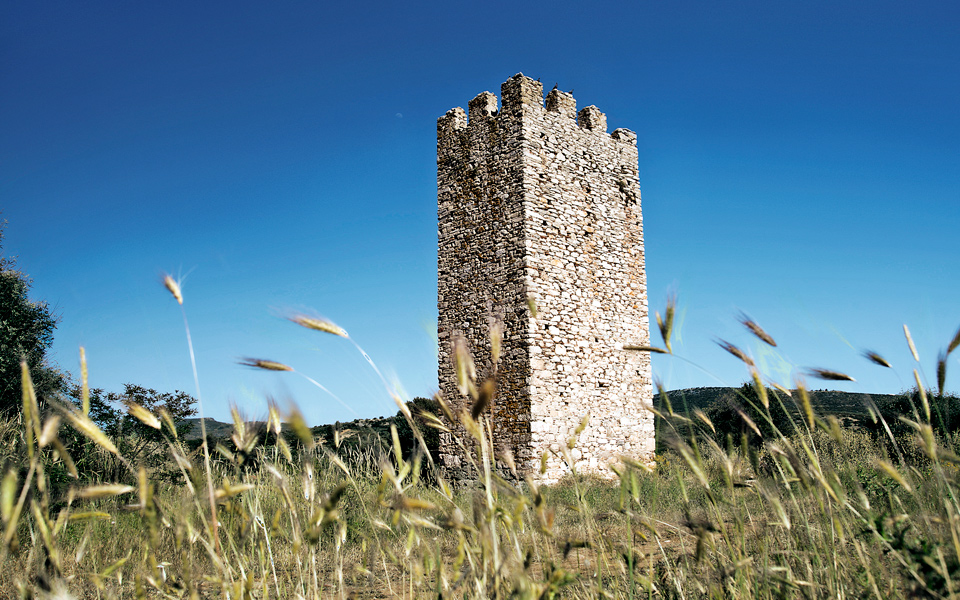
© Hellenic Ministry of Culture and Sports/Archaeological Receipts Fund, Angelos Giotopoulos
By Roman times, Marathon was also known for its native son Herodes Atticus, the sophist, senator and great public benefactor, who founded a music hall on the South Slope of the Acropolis. Herodes kept a large country estate northwest of the Marathon battlefield and made local benefactions that included the Sanctuary of the Egyptian Gods (ca. AD 160) — a tribute to the emperor Hadrian’s own Nilotic complex at Tivoli outside Rome. This “Sanctuary of Canopus,” once featuring a canal and adjoined by a luxurious Roman bath, is located behind Aghia Kiriaki church on the seafront, in the district of Brexiza. From Athens, via the Marathon Highway, it proves more direct to follow signs to the church than to the archaeological site.
Another tranquil spot in the Marathon area lies west of the town of Marathonas, where a three-storied medieval watchtower (“Oinoi Tower,” 13th c.) overlooks a natural spring, a Frankish chapel (Holy Apostles, 13th c.) and the marble ruins of a unique, Roman-era nymphaeum (water display) installed by Herodes Atticus.
Nearby, a low hill contains a cave, now gated, described by Pausanias and sacred to Pan, the goat-like god credited for the Persians’ “panic” during the Battle of Marathon. Nature walkers will appreciate a well-signed trail network that also begins here, with one path following an ancient road and another leading through a gorge to the foot of the Marathon Dam.
STOPS
FOR FOOD
• Heimona Kalokairi in Nea Makri
Tel. (+30) 2294.099.704
FOR SEAFOOD
• Isidora Tel. (+30) 2294.056.467
• Psaras Tel. (+30) 2294.055.237
FOR MEAT
• Argentina in Kalentzi
Tel. (+30) 2294.066.476
• Mario in Ano Souli
Tel. (+30) 2294.061.637
• Archontiko Lekka in Marathon
Tel. (+30) 2294.067.374
TRY
• Nea Makri’s famous halva
at Hatzigavriil
Tel. (+30) 2294.090.273
• Creamy delicacies
at Dafni pastry shop
Tel. (+30) 2294.095.962

